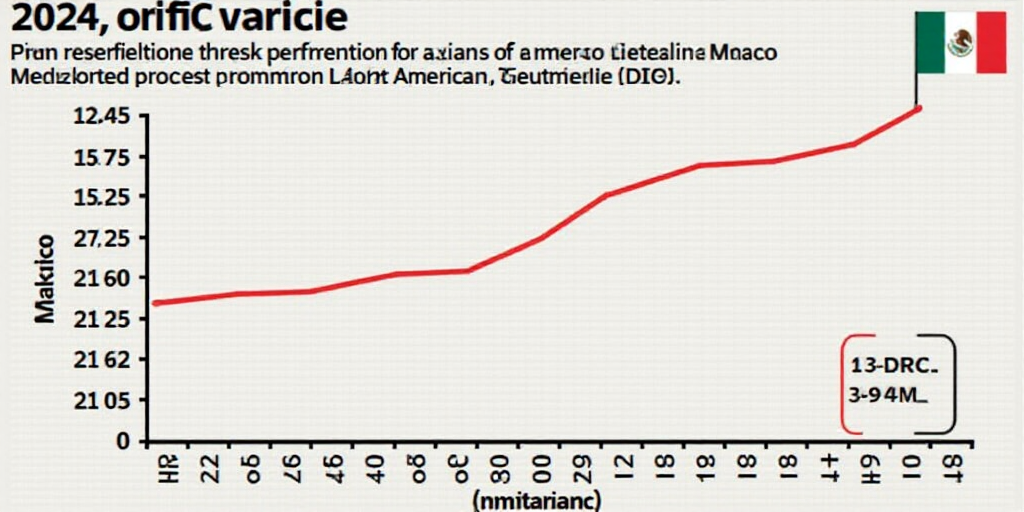Global Perspective and Mexico’s Challenges
According to the Institute of International Finance (IIF), Mexico’s economy will exhibit the most modest performance among Latin American countries in 2025. The IIF’s team of economists predicts that Mexico’s Gross Domestic Product (GDP) will grow by 0.3% this year, reflecting the deterioration of its external and internal growth drivers.
Global Factors Affecting Mexico
On a global scale, the IIF identified two key factors impacting Mexico’s performance: the reduced flow of productive investments due to uncertainty caused by the new U.S. trade and migration policies, as well as a weakening in remittances that previously boosted domestic consumption.
Domestic Challenges Facing Mexico
The IIF highlighted that Mexico faces the heaviest burden in the region due to structural obstacles such as supply chain reorganization, limited room for stimulus measures, institutional issues related to judicial reform, and deficiencies in its infrastructure.
Venezuela’s Performance
In contrast, the IIF estimates that Venezuela’s economy will grow by 0.6% this year, allowing it to surpass Mexico as the slowest-growing economy in the region. The report explains that a more closed economy makes it less exposed to the fragmentation and deterioration affecting the global market this year.
Global Economic Outlook
Desaceleración Mundial: El Diagnóstico
The IIF experts forecast that the global economy will grow by 2.6% in 2025, affected by the slowdown in the United States, the Eurozone, and Japan.
United States
For the U.S., they anticipate a 1.2% GDP growth, breaking a four-year streak of over 2% growth. The slowdown is attributed to moderated consumer sentiment, increased savings rate, and weakening business indicators.
Further complicating the outlook are introduced tariffs and intensified geopolitical tensions, which have heightened global uncertainty.
Eurozone
The IIF projects a 1% GDP growth for the Eurozone this year, navigating a mixed landscape with Germany’s expansionary policies driving increased defense and infrastructure spending amidst geopolitical instability uncertainty.
Japan
For Japan, they predict a 0.8% growth due to limited fiscal space and the gradual exit from its ultra-loose monetary policy, which are contributing factors.
China
Regarding China, the world’s second-largest economy, the IIF expects a 4.7% growth rate—the lowest in the past three years.
Key Questions and Answers
- What is the IIF, and why is their analysis important? The Institute of International Finance (IIF) is a global association of financial institutions. Their analysis is crucial as it provides insights into the economic performance of various countries, including Mexico and Latin America.
- Why is Mexico’s performance expected to be modest? Mexico faces structural obstacles, such as supply chain reorganization and limited room for stimulus measures. Additionally, global factors like reduced productive investments and weakening remittances negatively impact its economy.
- How does Venezuela’s performance compare to Mexico’s? Despite being one of the slowest-growing economies, Venezuela is expected to surpass Mexico in 2025 due to its more closed nature, making it less exposed to global market fragmentation.
- What are the global economic growth projections for 2025? The IIF forecasts a global economic growth of 2.6% in 2025, with the United States at 1.2%, Eurozone at 1%, Japan at 0.8%, and China at 4.7%.






